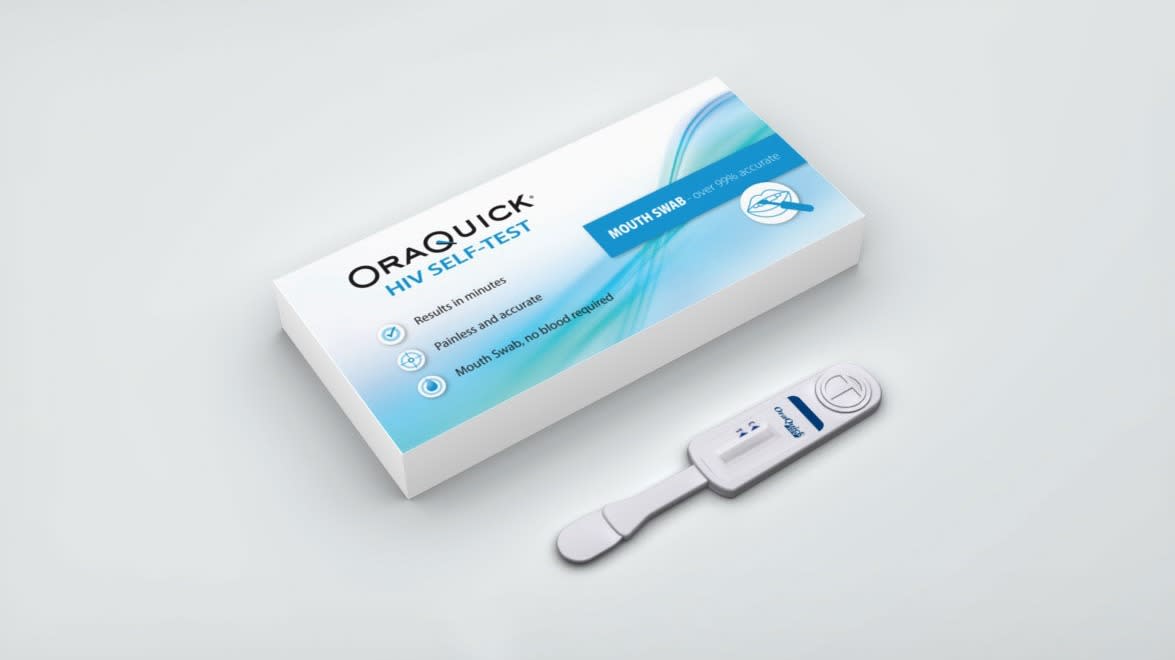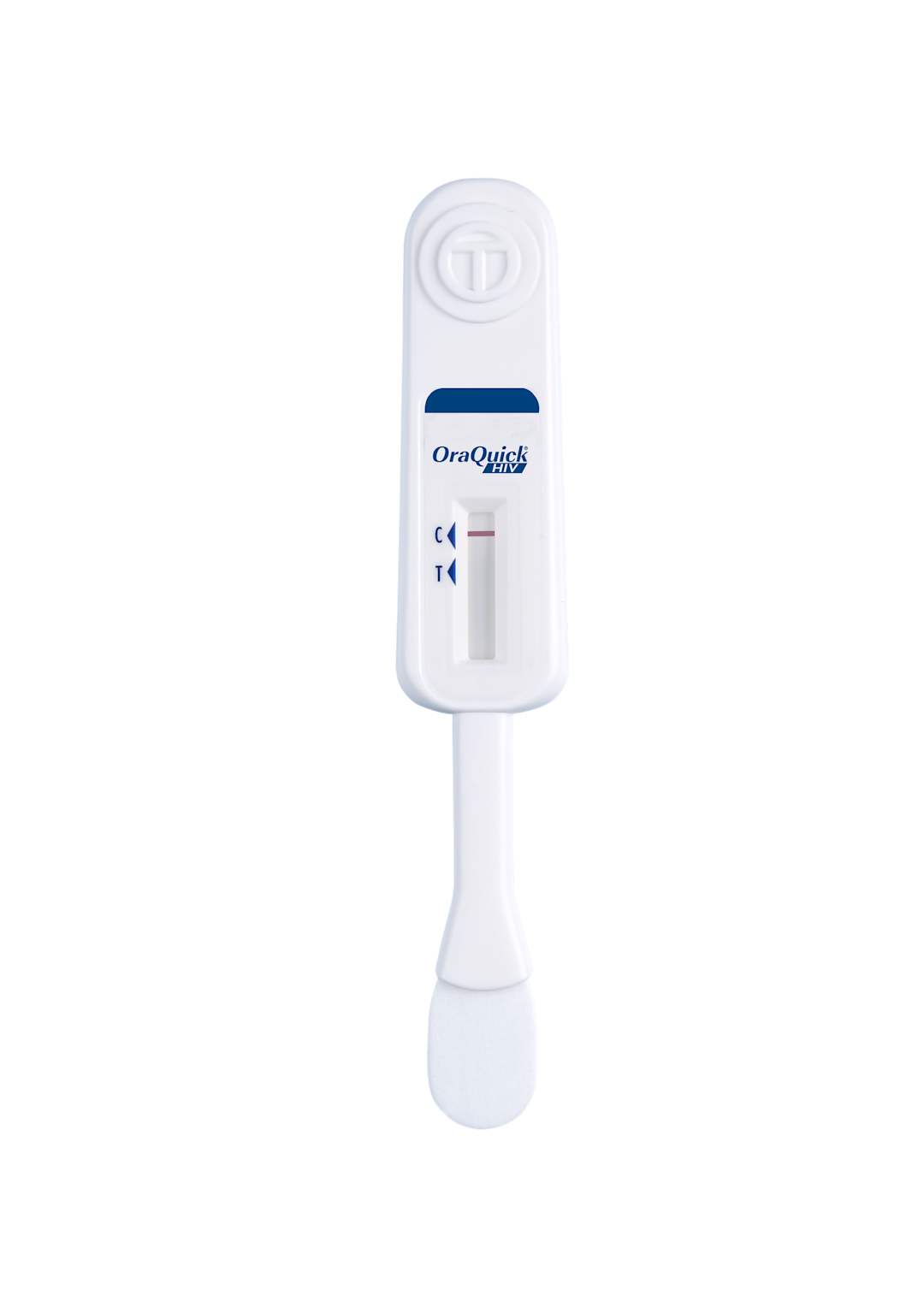
OraQuick HIV test
Oral swab

No blood, no needles. Test with an oral swab
Read your own results in 20 minutes


Test 3 months (90 days) after unprotected sex for most accurate results
What happens next

Order online
We’ll ask you a few questions about your health. We’ll text you when we dispatch your order.

Free discreet delivery
Delivery is included. Your order will be delivered in plain packaging by 1st Class post.

Results at home
No need to wait, get your results in 20 minutes

Clinical support
Get support by text. If you need help with the test or want to discuss your result, our clinicians are here to help.
What's in the OraQuick HIV test kit?
For the OraQuick test, you need just a quick swab of your gums to get your HIV test results within 20 minutes.
Your test kit will come with full instructions on how to test and how to read your results. Read these carefully before starting the test.
Test stand
Put this stand on a flat, stable surface.
Test tube and liquid
Without spilling any of the liquid, take the lid off the test tube. Then put it into the test stand.
Oral swab test stick
Following the instructions included in your kit, wipe the swab across your top and bottom gums. Then put it into the test tube, placing the flat pad into the liquid. Make sure the results window is facing towards you.
After 20 minutes your results will show in the results window. Do not wait longer than 40 minutes to check your results.
When should I do the test?
These tests can only give an accurate result 3 or more months after the risk of infection with HIV takes place.
If you’re not sure when you might have been exposed, test now and do a second test in 3 months.
People can carry HIV without showing symptoms or knowing that they have it. So routine testing is important. If you have sex without condoms, particularly if you've changed partners, are a man who has sex with men, or have multiple partners, you should get tested for HIV every 3 months.
Understanding your results
OraQuick gives clear results in 20 minutes.

If 1 line appears next to C, your test is negative. It’s likely that you do not have HIV.

If 2 lines appear, next to C and T, even if one is faint, this is called a reactive result. It means you need to do further tests in a clinic to confirm your results. Getting this result can be confusing or worrying. But it’s important you have an HIV blood test to find out if you have the infection. We can talk it through with you and help you find a sexual health clinic. Just reply to any of the text messages you’ve got from Fettle.
About a third of reactive results will be confirmed as positive in a clinic. For most people, the final result will be negative.

If 1 line appears next to T, the test has not worked. You need to test again with a new kit.
Remember, this test is only accurate at least 3 months after you might have been exposed to HIV. So it does not always pick up new infections. If you think you might be at risk of HIV, you should test again in 3 months.
HIV: the basics
Prevent infection with PEP
If you think you may have been exposed to HIV in the last 3 days, go to your local sexual health clinic, or A&E department, immediately to get post-exposure prophylaxis (PEP).
PEP is a medication that can prevent infection even after you've been exposed, if taken within 72 hours. The sooner that you start this medication, the more likely it is to work.
When to test for HIV
HIV infection does not show in tests immediately, so you need to wait for the right amount of time to get an accurate result. The best time after risk to test depends on which types of HIV test you use:
HIV lab test: 7 weeks
Insti HIV test: 12 weeks (3 months)
OraQuick test: 12 weeks (3 months)
If you’re not sure when you might have been exposed, test now and do a second test in 7 or 12 weeks.
People can carry HIV without showing symptoms or knowing that they have it. So routine testing is important. If you have sex without condoms, particularly if you've changed partners, are a man who has sex with men, or have multiple partners, you should get tested for HIV every 3 months.
Treatment for HIV
Modern treatment means most people living with HIV have a long and healthy life. Treatment involves antiretroviral medications.
If your test gives a reactive result, one of our clinicians will call you to explain the next steps. We’ll help arrange another test to confirm your result.
Do you need help with something else?
Find your local sexual health clinic.
Find out where you can access medication to reduce your chance of becoming infected with HIV. It must be started within 3 days of exposure.
Medication people at risk of contracting HIV take to prevent getting HIV from sex or injection drug use.
Find out about your emergency contraceptive options.


